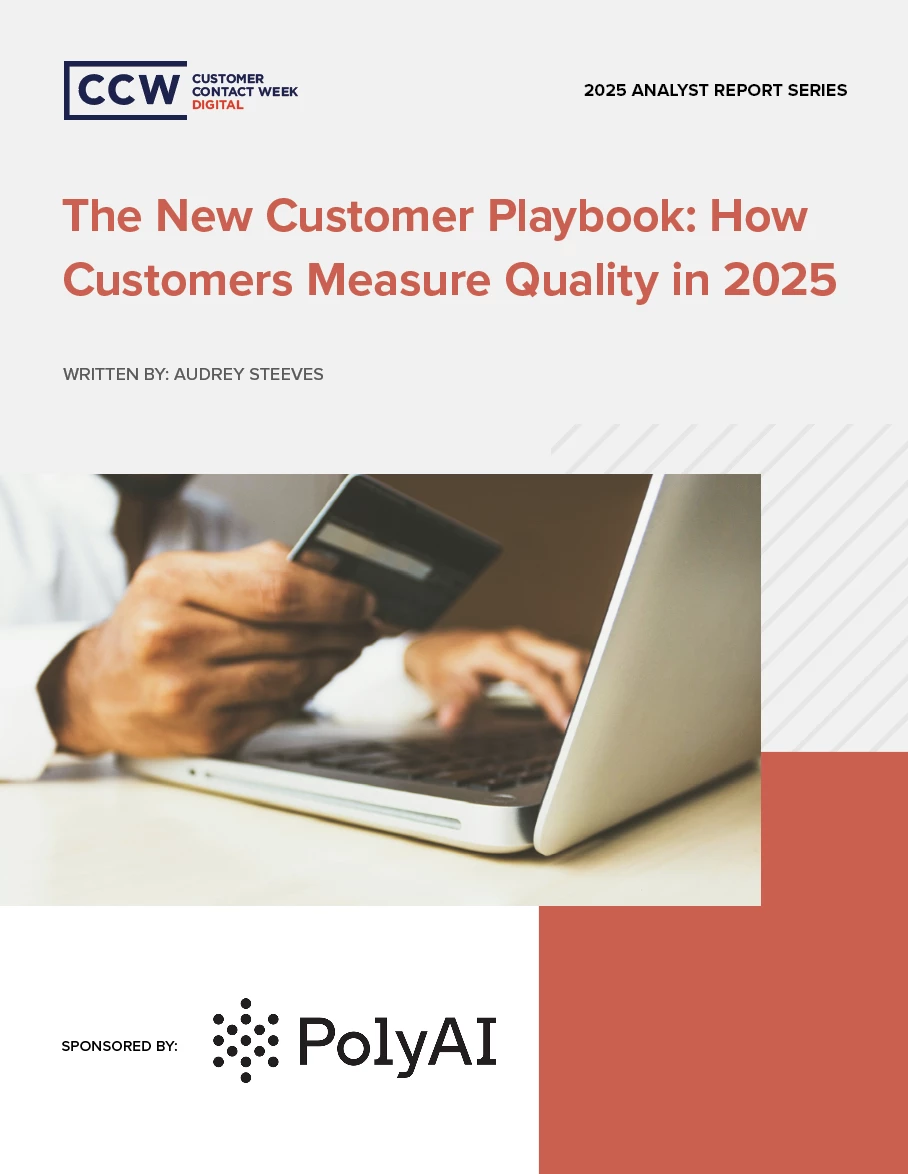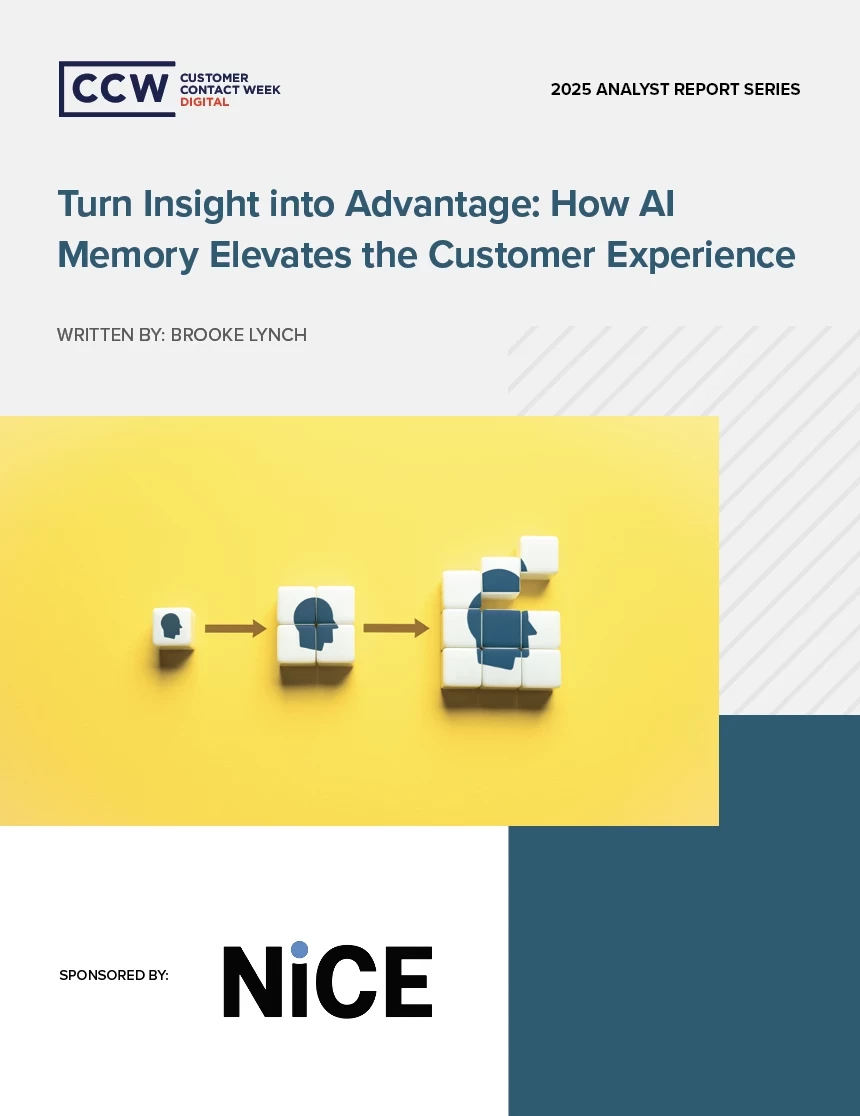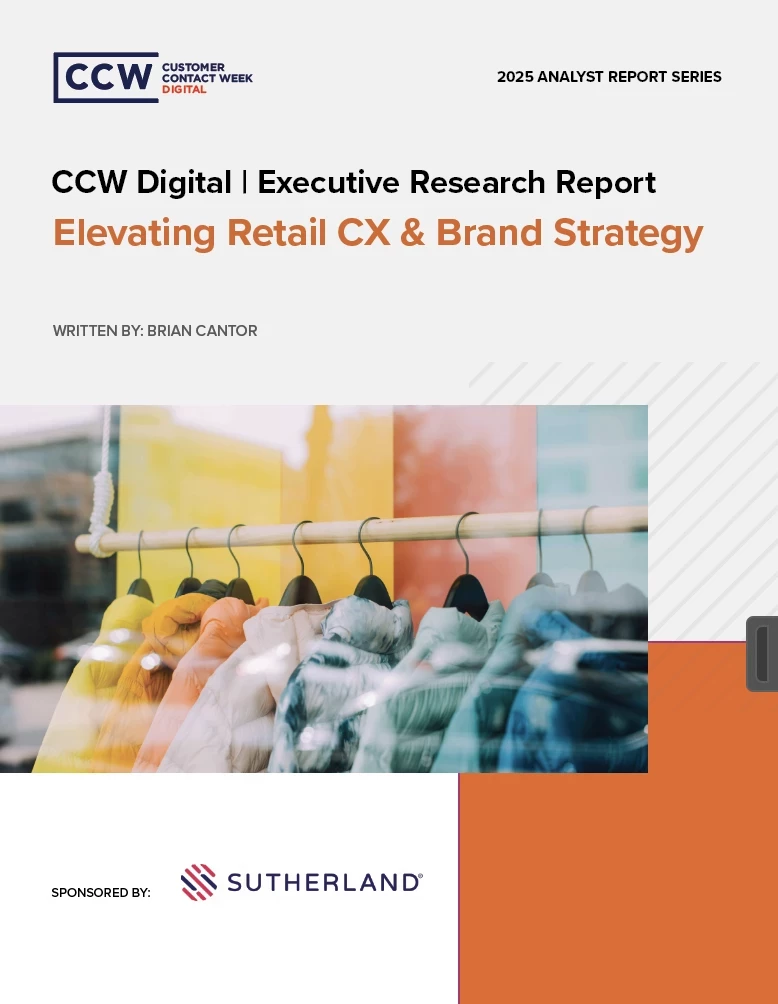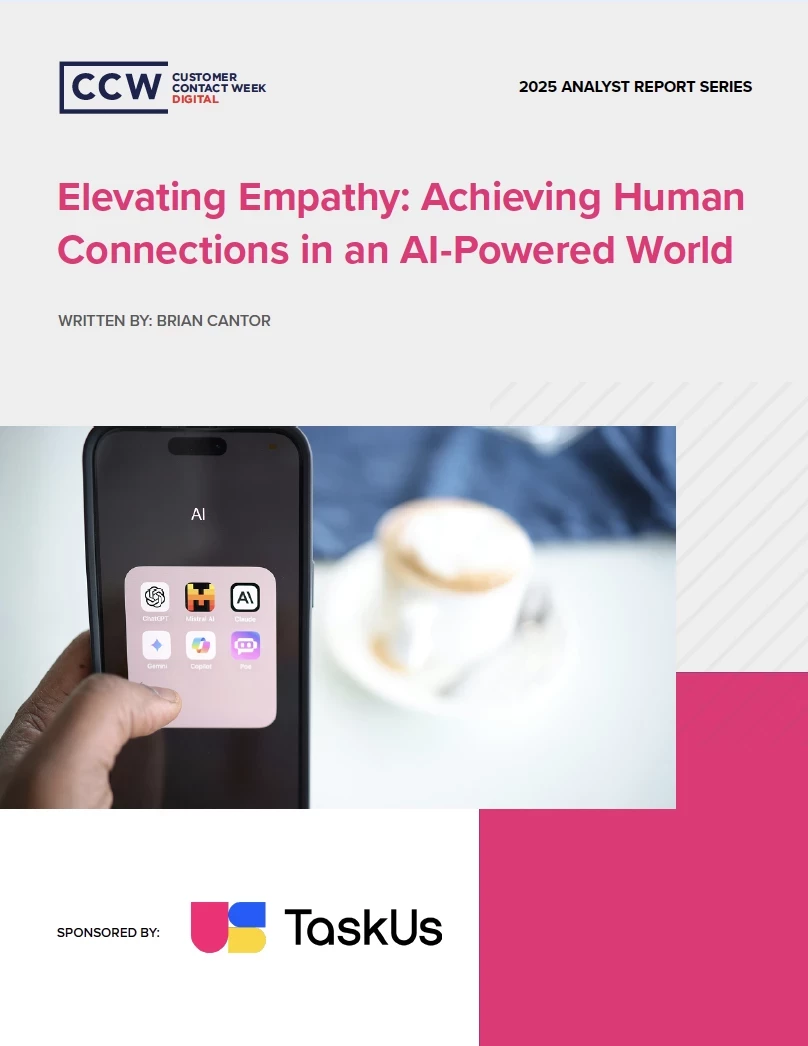Getting Ghosted By Companies During Your Move? What Relocating Teaches Us About Customer Service
When customers are preparing for a big life change, the last thing they're looking for is for companies they're working with to drop the ball.
Add bookmark
Many of us who are interested in customer contact got here because of the first hand experience we’ve had in providing, receiving, loving or hating customer service ourselves in some way, shape or form. And while it’s not my style to get too personal in my writing, this time around I’ll be sharing a customer service challenge that I’ve been facing for the better part of half a year.
Half a year?! is probably what you're thinking to yourself right now. Who in their right mind lets a customer service issue drag on for this long without a resolution? Well, it all started with everyone’s second least favorite adult responsibility (probably after filing taxes): moving. Everything began with an air of optimism–late last year my partner and I had just signed the lease on our own apartment and were preparing to move in together for the first time. Multiple rooms, exposed brick, pet-friendly, washer and dryer in-building, central air, a dishwasher–we signed on for everything a couple could want in their first New York City apartment. As part of the prep, we went through all the standard procedures like setting up heating and electric, getting renter’s insurance, and of course choosing an Internet provider.
Moving is always a stressful experience–whether it’s across the hall or across the country, and many new residents opt to hire movers, sign onto apps to ask for extra muscle power, hire contractors and so forth to help alleviate some of the stress that comes with relocation. Electricians, plummers and Internet providers also fall under this category of “people we hire to help make our move a better experience.” Moving into a new place is a memorable, nerve-inducing and often bittersweet moment in any one person’s life: you’re saying goodbye to all the memories, friends and family you had in one place, and taking the risk of rebuilding some of those moments somewhere new. In the end, there’s no feeling quite like the content exhaustion of sitting on your new kitchen floor surrounded by labeled boxes, eating pizza off your lap with someone you love. But for some of us, the pizza party doesn’t always soothe the mental and financial pain of a move.
Customers On The Move Need Options, And Companies Need To Communicate
My belly full of pepperoni that day, I did what any other person who wants to save a little extra money on their Internet bill would do: shop around. I surfed the web and compared provider deals, new member offers like gift cards, streaming subscriptions and discounts on packages based on our household’s needs. But the more I researched, the more I realized that getting the Internet at our new place was going to be a challenge–it appeared that there was only one major provider in all of New York City that services my zip code. We found the place, toured it and signed the lease all in the span of a week–in his competitive metropolitan housing market, you’ve got to. Because of how quickly things moved, and considering that we were just moving to a new neighborhood, we didn’t think much about researching our Internet options. During our apartment tour I had asked how Internet service was across the space, but in my new apartment leasing naïveté, I failed to ask the much more important question of what Internet service had been in use for the space. When I realized it was slim pickings in my neck of the woods, it was already too late to change our minds on a location with more provider options. Nonetheless, in an act of optimism I made calls to all of the local providers, but almost every provider regretted informing me that they couldn’t set up the Internet with me on my move-in date, except for one.
With no other options available to me I signed up for paperless billing and chose the best package and perks possible, hoping that the quality of my web services would be worth the $300 Visa gift card the company claimed I’d receive after three months of unmissed bill payments as a new customer. Incentives like loyalty programs, first-time discounts or vouchers for other brands are just some of the ways that organizations can attract and secure long-time customers. For me, the strategy felt like a decent make-good for the fact that at the time I had no other Internet provider alternatives. On move-in day the Internet provider in question came in, installed my router and things seemed to go without a hitch for the first month.
The Internet worked reliably enough: I was able to surf the web, stream shows, connect multiple devices, listen to music and use gaming consoles without much problem. These days, customers expect technology companies and products to be able to do just that as the bare minimum. Long gone are the “ooh ahh” days of being able to connect a phone, a computer and an iPad to web services. But considering that about 130,000 people live in my area code, for just one company to be able to provide decent service to so many households didn't seem too bad. I didn’t love the service, I didn’t hate it, but it was my only option and it worked. That is, until one random day I woke up and none of it did.
That day I worked off a hotspot from my phone (which created an additional charge to my phone bill) for the month while I tried to email, call and post online to the Internet company to see what was going on. I couldn’t leave the house to go write at a cafė because with my partner at work, who would be home to follow a service agent’s instructions or restart the router? At that point I hadn’t gotten an email, a call, or an SMS about an upcoming payment or about missing a payment date. And if I wanted that shiny new gift card, I best not miss it! After two hours of calling to see how I could get my Internet restored, I was met with a customer service representative telling me they couldn't even open my account, let alone check the status, because their Internet was down. The best course of action, the agent recommended, was to call back in a few hours.
By the time the workday had come and gone, I had yet to get in touch with someone. Around 8 pm that night I finally got a hold of an associate, only to discover that while their web connection was back up and running my Internet had been shut off due to failure to pay the bill–despite the fact that I got no notification about an upcoming bill or a pending late payment. When asked why I received no alert about my bill prior to missing the date, I was told that “paperless” meant that I would not be receiving any kind of notification–at all. As a result, I missed the first month's payment and was also charged a late fee–already putting my eligibility for that gift card at risk. The care agent on the other end of the call empathized with my disappointment, set me up for auto-pay and assured me that I’d get an email notification for the following month. Expecting some form of regular communication, be it by phone, social media, email or paper mail, is simply the standard for customer service. It keeps companies front of mind for customers, ensures timely payments and helps provide the transparency that so many consumers are looking for from brands.
When Digital Doesn’t Cut It And Old School Methods Don’t Solve New Age Problems, Accountability Is Essential
Sure enough, the next month I was faced with the same exact problem: no email, no text, no call, no card charge and no voicemail. Except this time around my provider’s Internet was up and running, and my partner was home to help me track down help by phone. Between the two of us, we spoke to three different people that day and got conflicting information. Omnichannel? Not so much… One agent told us we weren’t getting updates because we don't have an online profile, which is necessary to get email updates on billing (which, how is that possible? If we’re paying you then surely we have an online profile with you). Another assured us that we would still be in the running for a gift card despite the mix-up on the part of the company, and that we would even get a $5 credit off of our bill for the next year, and the third switched us to paper mailing for our bill to avoid any conflict in the future.
Despite efforts on our part, months three, four and five were also met with no texts, no mail, no calls, no credit card charge, no emails–just the same rinse-and-repeat call, apology, and empty promise that it wouldn’t happen next time. As we’ve all experienced, moments like these create distrust on the part of the customer, inconsistency on the part of the company and confusion for both parties. So by this point, my personal faith that any phone call, email, tweet or conversation would actually solve this ongoing problem was virtually non-existent. But after the Internet shutting off and being forced yet again to pay an extra hundred dollars in supposed “missed” payments, falling further and further outside the reach of my oh-so-coveted gift card, I picked up the phone last month to make a call. How could they not have my call history, my complaints, my requests, my payments, my login information and my attempts to solve this problem on file after six whole months?!
To my surprise, an attempt to pay my March bill by phone was met with two automated responses:
- If I didn't pay the outstanding balance, my Internet service would be suspended.
- Phone agents are no longer available, please go to the website to pay your bill.
I thought maybe I was calling the wrong number, and asked my partner to give multiple rings as well. No matter what method we chose we got no response from anyone. Considering that we needed to have Internet access that day (and that I have this job to do), we were forced by the automated system to pay the bill and the late fees in order to keep our service. After this experience, I hopped back on the phone to see if any of the other providers that were previously out of our geographical location had picked up our area code as a provider–no dice. And so, here I am in April, wondering when, where and how I’ll pay (but probably miss) my bill next.
When It Comes To CX, ‘No Contact’ Isn’t Always The Best Move
In 2023, companies are tasked with toeing the fine line between communicating too much and not communicating enough. Some brands boast about being accessible 24/7, 365 across platforms and time zones. Others promise you that they won’t spam you with texts, calls, emails or newsletters. Some send you the occasional reminder that they’re there when you need them or are ready to re-subscribe. Depending on who you’re buying from, what you need, and what kind of consumer you are, you’re going to prefer one form and level of contact over another. When it comes to a move, you have better chances of having your furniture delivered intact, your lights turning on and your Internet up and running if you’re in sync with your movers and providers leading up to and on the date of your move.
In instances where customers’ servicing options are limited and where companies seem to monopolize one area or industry, more communication as opposed to none should be not only encouraged, but necessary. In my case, my Internet provider isn’t supplying Internet and phone service to all of New York City, so why can’t they answer a phone call or email in a timely manner? Of course as a customer I can understand hiring constraints and the high level of call volumes many call centers and tech companies are facing, but opting to stonewall customers who are struggling while your organization’s pockets fill up is one surefire way to lose customers. Lucky for my Internet provider that at least in my case, they can’t. What can happen is that if instances like this continue to occur not just with me, but with other customers, this particular Internet provider can be at risk of facing heightened costs if they don't deliver better customer service. More people will call in or complain that they can’t, bombard email inboxes and head to social media, necessitating more agents to handle high inquiry numbers. Faced with angry customers, those new agents may get frustrated and leave, resulting in quick employee turnover, plus extra recruiting and internal training costs.
For now, this company and I are stuck with each other, for better or worse. But when it comes to moving, companies that help customers start a new chapter of their lives should be hoping–and doing–for the better in a way that ultimately ends up benefiting everyone.




























